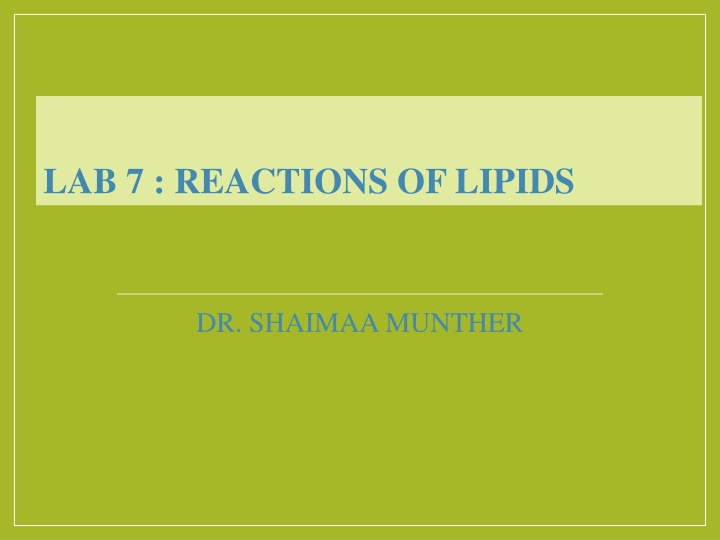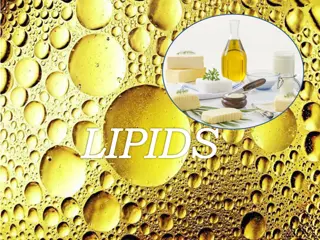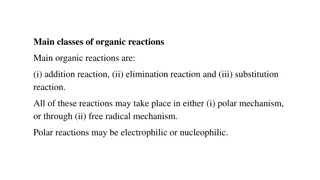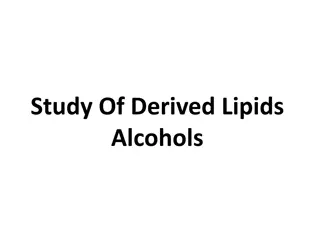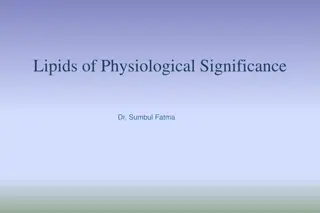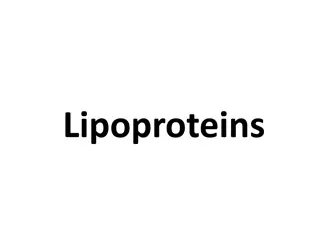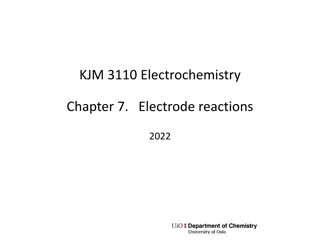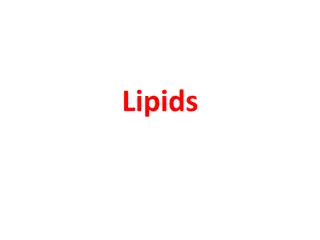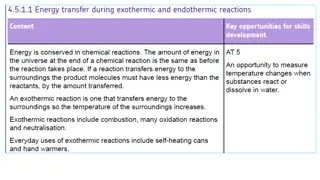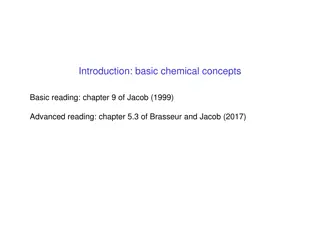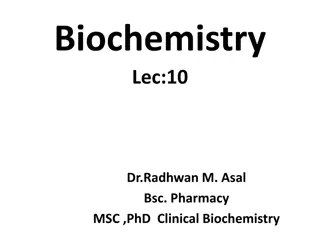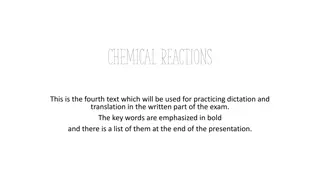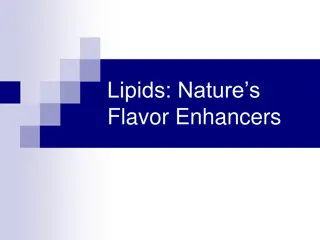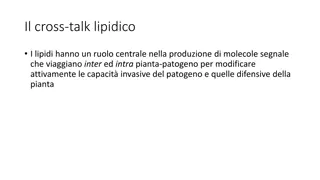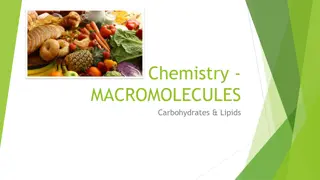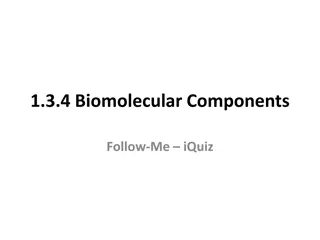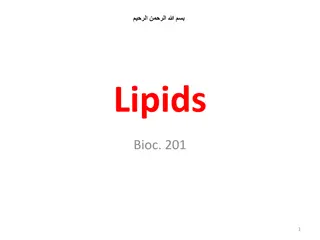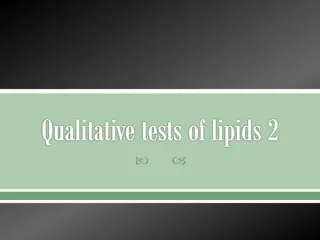LAB 7 : REACTIONS OF LIPIDS
Lipids play essential roles in cells and biological systems. Learn about lipid chemistry, classification, biological functions, and tests such as solubility and saponification. Explore how lipids provide energy, form cell membranes, and impact lipid metabolism. Dr. Shaimaa Munther guides through understanding lipids' significance in biochemistry and health implications.
Download Presentation

Please find below an Image/Link to download the presentation.
The content on the website is provided AS IS for your information and personal use only. It may not be sold, licensed, or shared on other websites without obtaining consent from the author.If you encounter any issues during the download, it is possible that the publisher has removed the file from their server.
You are allowed to download the files provided on this website for personal or commercial use, subject to the condition that they are used lawfully. All files are the property of their respective owners.
The content on the website is provided AS IS for your information and personal use only. It may not be sold, licensed, or shared on other websites without obtaining consent from the author.
E N D
Presentation Transcript
LAB 7 : REACTIONS OF LIPIDS DR. SHAIMAA MUNTHER
LIPIDS CHEMISTRY The term lipids applies to a class of compounds that are soluble in organic solvents (e.g. alcohol and chloroform) and insoluble in water. Lipids are essential components of every living cell. The aim of this practical session is to: 1. Obtain a simplified knowledge about lipids. 2. Perform different tests showing some lipid characteristics.
Classification of Lipids Lipids are classified into: I. Simple lipids: They are esters of fatty acids with various alcohols. They include oils and fats which are esters of fatty acids with glycerol (i.e. triglycerides).
Classification of Lipids II. Complex lipids: They contain (in addition to fatty acids and alcohols) additional groups as phosphate (e.g. phospholipids), carbohydrates (e.g. glycolipids) and proteins (e.g. lipoproteins). III. Precursor and derived lipids: They include fatty acids, cholesterol, steroid hormones, fat-soluble vitamins (vitamin A, D, E & K) and eicosanoids, which include prostaglandins, leukotrienes and thromboxanes.
Biological Functions of Lipids They provide energy storage and metabolic fuels. Cholesterol is a precursor of steroid hormones, bile acids (which help in digestion of dietary fats) and vitamin D. They act as functional and structural components of the cell membrane. Lipoproteins (e.g. LDL & HDL) are a mean for transporting lipids in blood. Imbalance in lipid metabolism can lead to major clinical problems such as obesity and atherosclerosis. 1. 2. 3. 4. 5.
Test for Solubility of Lipids in Polar & Non-Polar Solvents: Add about 2 ml of the provided oil sample to 5 ml of water in a test tube and try to mix oil with water. By shaking, oil and water mix initially; however, they gradually separate out to form 2 layers. Repeat the experiment using chloroform instead of water. Oil dissolves in the organic solvent chloroform but not in water because oils contain long hydrocarbon tails which are hydrophobic in nature. 1. 2. 3. 4.
Saponification of Oils Saponification of oils means the hydrolysis of triglycerides in the oil in presence of an alkaline medium (e.g. NaOH) into glycerol and fatty acids with the production of sodium salt of fatty acids or soap .
Saponification of Oils Place 5 ml of the provided oil sample in a 250 ml beaker. Add 15 ml of alcoholic NaOH solution. Cover the beaker with a watch glass and heat on a boiling W.B. Stir the reaction mixture from time to time using a glass rod until a semi-solid mass is formed. Put a small amount of this mass in a test tube containing about 5 ml of water and shake well; a froth is obtained indicating the presence of soap. In another test tube, prepare a soap solution by dissolving a small amount of the formed soap in water. Add few drops of CaCl2 or MgSO4 to this solution and shake well; note the formation of insoluble Ca or Mg soaps without any froth. This explains why soap is not effective in hard water which contains calcium and magnesium; for soap to be effective, it must be soluble in water. 1. 2. 3. 4. 5. 6.
Detection of Cholesterol Salkowski test: to 2 ml of the provided chloroformic extract of canned food, add an equal volume of concentrated sulfuric acid; a yellow to brick-red color is formed indicating the presence of cholesterol. Liebermann-Burchard test: add 10 drops of acetic anhydride and 2 drops of concentrated sulfuric acid to 2 ml chloroformic extract of canned food; a bluish-green color is formed indicating the presence of cholesterol. N.B. Colors are due to sulfonation, acetylation and rearrangement in cholesterol molecule.
